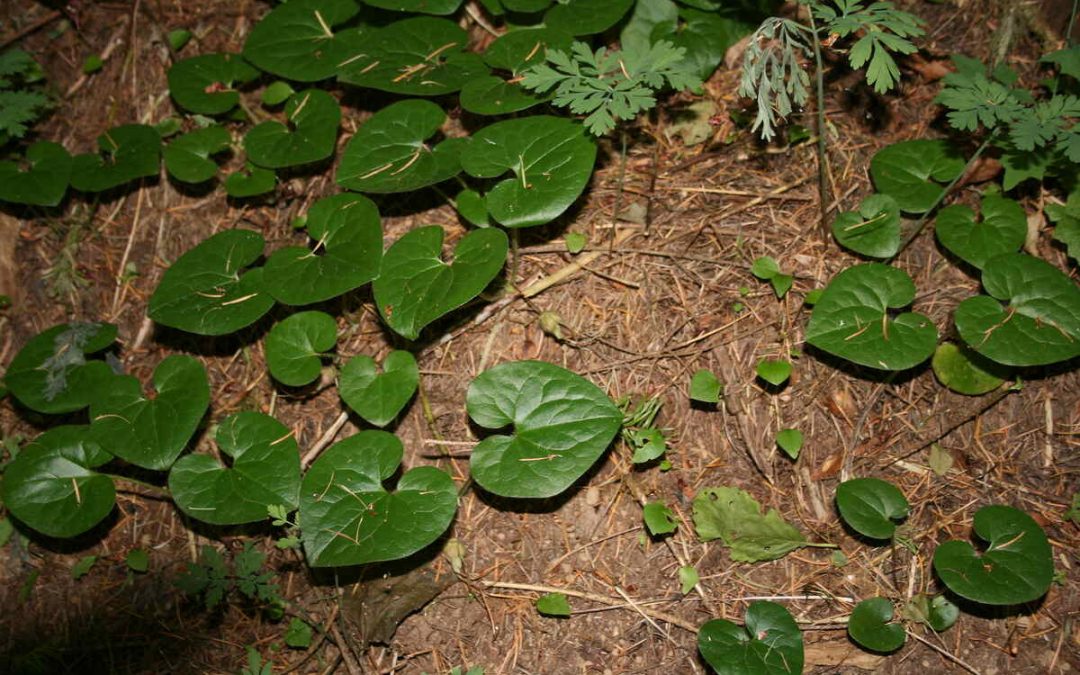While enjoying the scenic splendor of Puget Sound is great, it’s a long drive. Bringing the natural beauty that the water and native trees provide closer to home is even better. That’s why we’ve put together a list of the best native plants for Tacoma to use in your yard to help you go native.
Whether it’s native perennials, ornamentals, or wildflowers, growing plants native to Pierce County has many benefits:
- Native plants are adapted to the Tacoma climate, so they require less water, fertilizer, and pesticides.
- Native plants are more tolerant of diseases and pests commonly found in the Western Washington area.
- Using fewer pesticides and fertilizers results in fewer chemicals running off into the water supply.
- Native plants help preserve biodiversity and the ecosystem by providing nourishment and shelter to pollinators and wildlife.
This article will cover:
- 8 Native Plants for Your Tacoma Yard
- How to Choose Native Plants for Your Tacoma Landscape
- FAQ About Native Tacoma Plants
- Where to Find Native Plants in Tacoma
8 Native Plants for Your Tacoma Yard
1. Wild Ginger (Asarum caudatum)
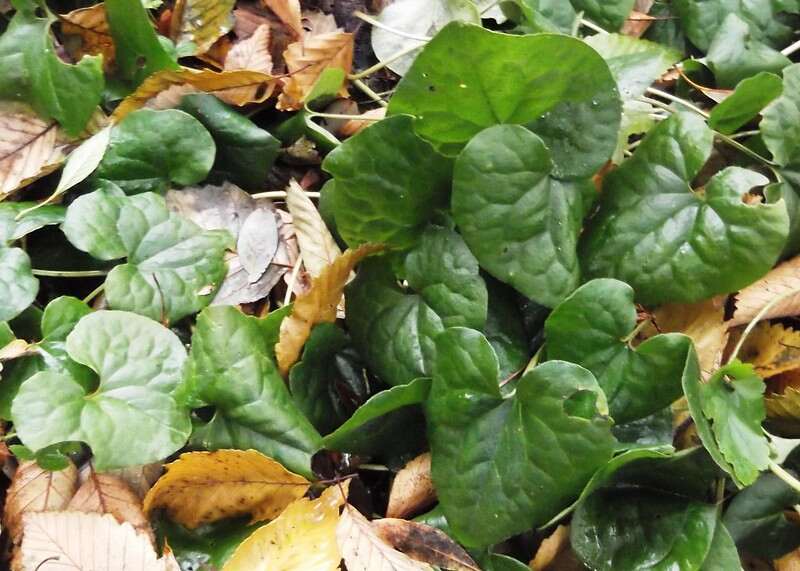
Photo Credit: brewbooks / Flickr / CC BY-SA 2.0
Don’t let the name fool you, wild ginger is not the same spice you use in recipes. It has been used for medicinal purposes and even used as a deodorant, but ingesting large quantities of this ginger can be toxic.
This groundcover has striking leaves and flowers. In late spring and early summer, strong, dark-red colored three-pronged petals blossom. The glossy green leaves look like hearts.
With all of the precipitation Tacoma experiences, it’s no wonder wild ginger is a favorite. It grows best when it remains moist. If your yard has a good irrigation system, it will provide a good home for wild ginger.
A property with a lot of trees or buildings blocking the sunlight is exactly what wild ginger is seeking. It thrives in full or partial shade and is adamant about avoiding the sun.
Plant type: Evergreen ground cover
Hardiness zones: 4 to 8
Sun: Full or partial shade, no direct sunlight
Soil: Fertile, organic matter
Duration: Perennial
Fragrance: Leaves when crushed have a lemon-ginger smell
Bloom time: Spring
Water needs: Must stay moist
Mature height: 6 to 10 inches
Potential hazards: Caution is advised. Ingesting large quantities can be toxic.
Maintenance: Low
2. Tall Oregon Grape (Mahonia aquifolium)
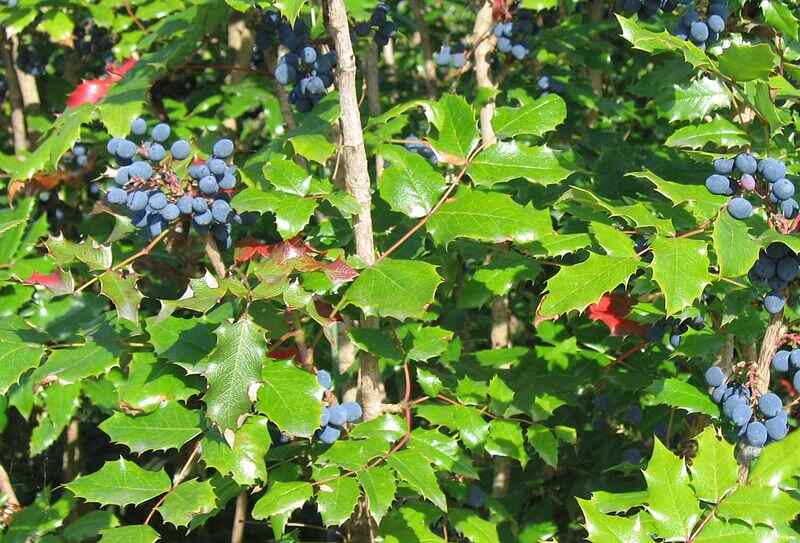
Photo Credit: Meggar / Wikimedia Commons / CC BY-SA 3.0
Tall Oregon grape has beautiful, bright yellow flowers that are eye-openers. A cluster of tiny petaled flowers emerges in the spring, cradled by dark green leaves. The shrub’s leaves turn a purplish glow in the winter, bringing wonderful color to the colder Tacoma months.
Pollinators nibble on tall Oregon grape’s flowers, and birds, wildlife, and humans enjoy the purplish-blue berries. This ornamental shrub has been used to treat skin ailments and for other medicinal purposes.
It’s easy to see why tall Oregon grapes are a Tacoma native. The plant thrives best in partial to full shade, so it’s right at home in the multiple months of mostly cloudy days of Tacoma. If you think your yard has too much shade and not enough sunlight, consider adding tall Oregon to your flower bed.
Plant type: Shrub
Hardiness zones: 5 to 8
Sun: Partial shade to full shade
Soil: Loam, acidic, well-drained
Duration: Perennial
Fragrance: Honey
Bloom time: Spring
Water needs: Medium
Mature height: 6 to 8 feet
Maintenance: Low
3. Common Camas (Camassia quamash)
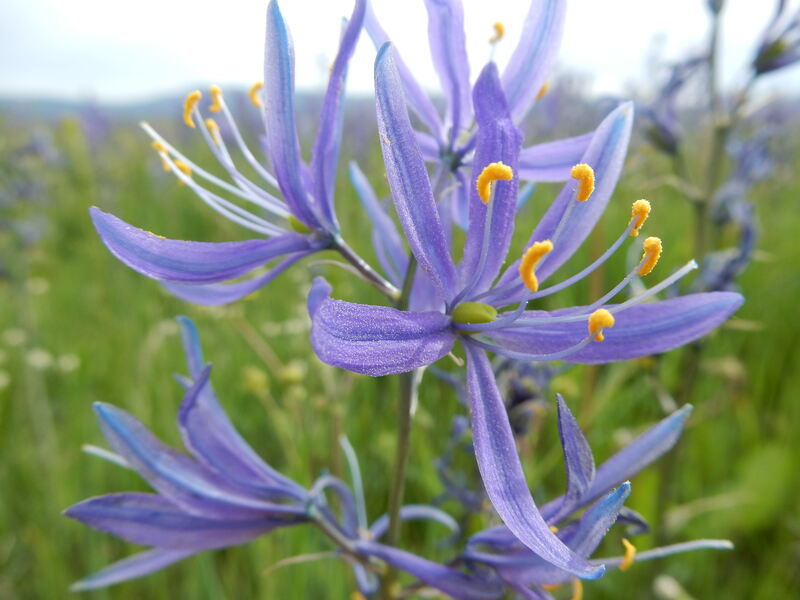
Photo Credit: Matt Levin / Flickr / CC BY-SA 2.0
Common camas, also called by its common name, camas, is another plant that has shared its nutrients with animals and humans. The bulbs were a food source for indigenous people. And common camas is still consumed by many people in present times, including western North American natives and people living in certain parts of the Canadian province of British Columbia.
The common camas sprouts uncommonly lovely sky-blue flowers between spring and summer. Fall is the best time to plant this wildflower. So, if you’re looking for fall planting, add camas to your plant list. Be ready to give it a lot of water while it’s developing.
Common camas attracts beetles and bumblebees and works well when planted in groups in cottage gardens and borders. If you’re interested in low-maintenance landscaping like rain gardens or xeriscaping, you’ll be happy to know common camas is also well-suited for rain gardens. Although camas needs plenty of water while growing, it tolerates both wet soil and drier conditions once established.
Plant type: Flowering plant/wildflower
Hardiness zones: 3 to 8
Sun: Full sun, very little shade
Soil: High organic matter with good drainage; tolerates seasonally moist soil
Duration: Perennial
Fragrance: Spicy; Smells like molasses when boiled
Bloom time: Late spring to early summer
Water needs: Average /(Natively found in moist, spring meadows that dry by late spring)
Mature height: Up to 30 inches
Maintenance: Low to medium
4. Vine Maple (Acer circinatum)
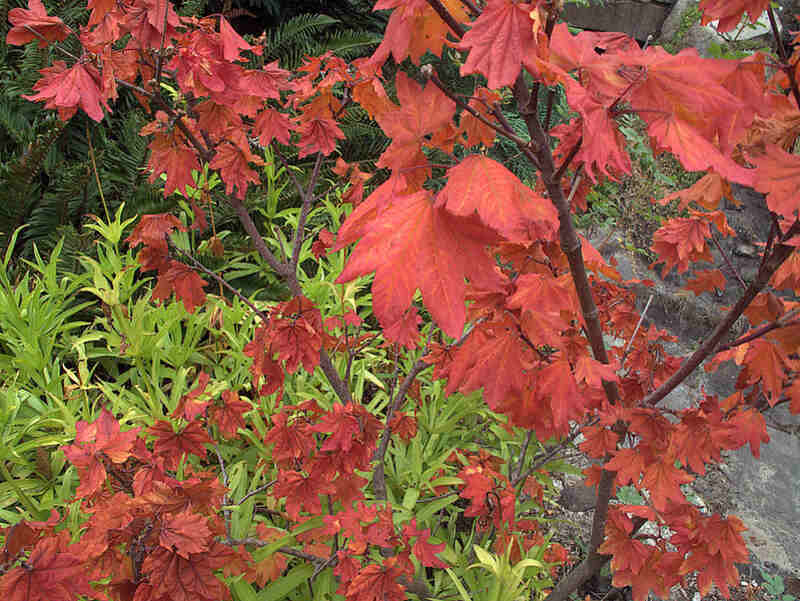
Photo Credit: John Rusk / Flickr / CC BY 2.0
Vine maple, also called Oregon vine maple, is well adapted to the Pacific Northwest climate. The plant thrives best in cooler weather or areas that have a lot of shade and moisture, making it ideal for Tacoma.
This shrub highlights homes in a magnificent array of colors. Vine maple’s bark is reddish-green with bright green leaves that turn orange and red in the fall. The spring ushers in small purple and white flowers. Songbirds and mammals are attracted to the red berries that soon follow the flowers.
Vine maple is suitable for nearly any Tacoma home. It tolerates most soils and adjusts to the shadiness of your property, growing upright in sunny areas, and taking on a horizontal habit in shady locations. Vine maple is a shrub that sometimes grows into a tree.
This plant may suffer in hot, dry weather. Fortunately, Tacoma summers are more warm than hot. Vine maple can grow as tall as 30 feet and up to 20 feet wide, so a home with a lot of room in the front or backyard is best. Like common camas, vine maple is well suited as a native tree or shrub in a rain garden.
Plant type: Small tree, shrub
Hardiness zones: 5 to 9
Sun: Full sun to partial shade
Soil: Loam, sand, clay, moist, well-drained
Duration: Perennial
Fragrance: None
Bloom time: Spring
Water needs: Medium
Mature height: 15 to 30 feet tall, 15 to 20 feet wide
Maintenance: Low
5. Red Flowering Currant (Ribes sanguineum)
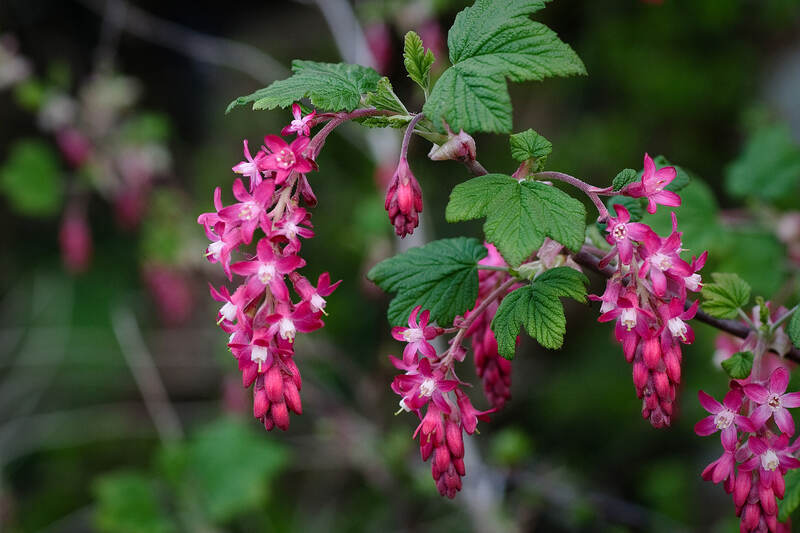
Photo Credit: Mark Robinson / Wikimedia Commons / CC BY 2.0
Red flowering currant, also called blood currant, grows brightly along the Cascades. Once you see this beauty, you’ll know it derived its name from its flashy small red petals that blossom in the spring. You can also find the shrub showing off-white or pink flowers.
The currant is most at home in rocky, well-drained soil, but if your soil is poor, rest assured. You can still give this fiery plant a good home, because it tolerates poor soil, too.
This is a great starter plant if you’re new to gardening; it’s easy to grow. It needs supplemental water in its first season and possibly in the second season, too. After it’s established, it’s drought-tolerant.
The red flowering currant attracts more than butterflies and hummingbirds. Humans use the dark blue berries in pies, jams, and juice. Red flowering currant is a tasty addition to rain gardens, and would also make delicious hedges.
Plant type: Deciduous shrub
Hardiness zones: 5 to 9
Sun: Full sun, partial shade
Soil: Prefers well-drained, rocky soil but tolerates poor soil
Duration: Perennial
Fragrance: Sweet sage-rosemary
Bloom time: Spring
Water needs: Water the first two summers of establishment
Mature height: 8 to 10 feet
Maintenance: Low
6. Lewis’ Mock Orange (Philadelphus lewisii Pursh)
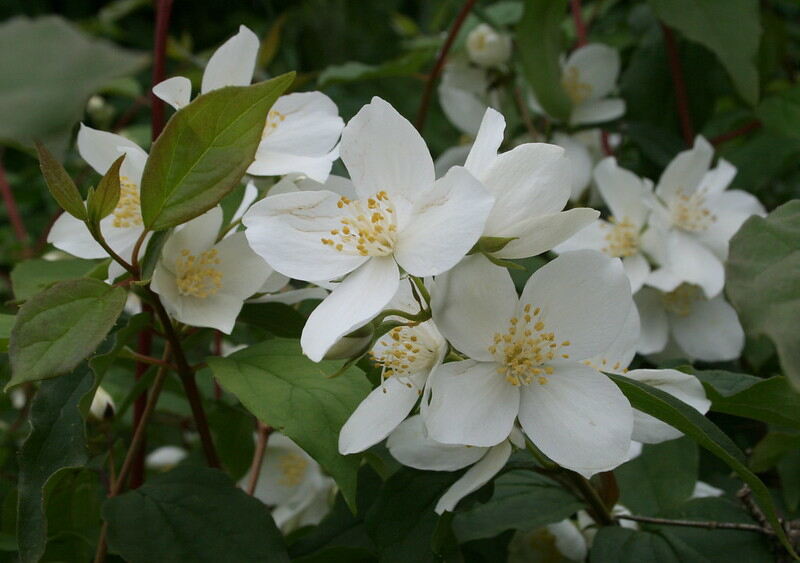
Photo Credit: born1945 / Flickr / CC BY 2.0
Lewis’ mock orange is also called wild mock orange. This spectacular-looking shrub has creamy white flowers that bloom in the spring and summer, with each flower containing four lush petals. If you take a deep breath when you’re around this plant, you’ll understand why it’s called mock orange. It has a sweet scent that reminds you of orange blossoms.
Wild mock orange accommodates most soil types, but it prefers soils rich in nutrients. If your property gets some shade but is mostly covered in sunlight, Lewis’s mock orange will be happy to join your family and improve the health of your property. Its fibrous root system helps improve the soil structure and prevents erosion. Wild mock orange attracts butterflies and is a shelter for wildlife.
Plant type: Shrub
Hardiness zones: 4 to 8
Sun: Full sun, partial shade
Soil: Prefers gravelly and nutrient-rich soils, but tolerates a variety of soil types, like chalk, loam, and sand
Duration: Deciduous
Fragrance: Orangey scent
Bloom time: Spring and summer
Water needs: Low-medium
Mature height: 5 to 8 feet
Potential hazards: Toxic to cats
Maintenance: Low
7. Nootka Rose (Rosa nutkana)
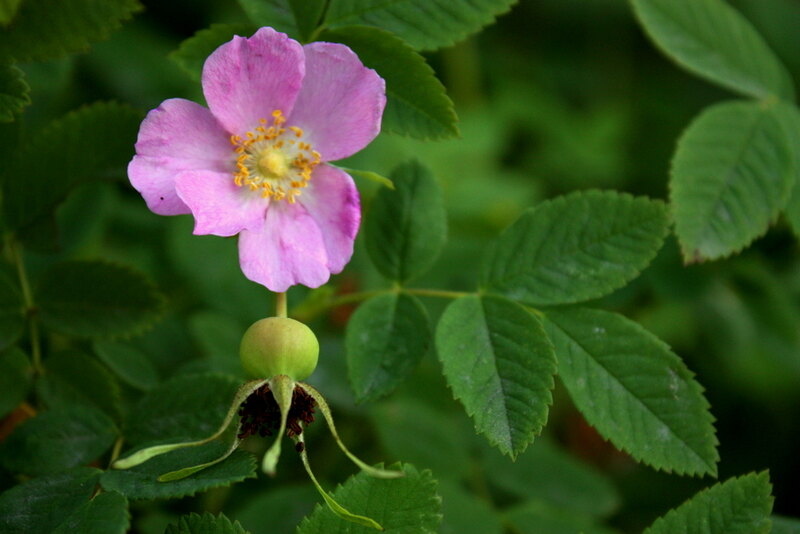
Photo Credit: Leslie Seaton / Wikimedia Commons / CC BY-2.0
In late spring to mid-summer, nootka rose brings forth pretty pink flowers that can be a sight for sore eyes after the cold Tacoma winters. Yellow stamens with red rose hips sit in the middle of the flower. Homeowners may see birds come by to eat the red rose hips in the winter if the hips are left on the shrubs.
If you’re looking for a quick-spreading plant, look no further. To control nootka rose from roaming so freely, pruning regularly is required, with winter pruning recommended. Nootka rose works well as hedges and in wildlife gardens. Nootka rose is a true northwest native plant – it grows best in well-drained soils but can tolerate seasonal flooding.
Plant type: Shrub
Hardiness zones: 4 to 8
Sun: Full to partial sun
Soil: Sandy, loamy, or clay; well-drained soil
Duration: Perennial
Fragrance: Subtly Sweet
Bloom time: May – July
Water needs: Low
Mature height: 2 to 9 feet
Maintenance: Low
8. Pacific Red Elderberry (Sambucus racemosa var. racemosa)
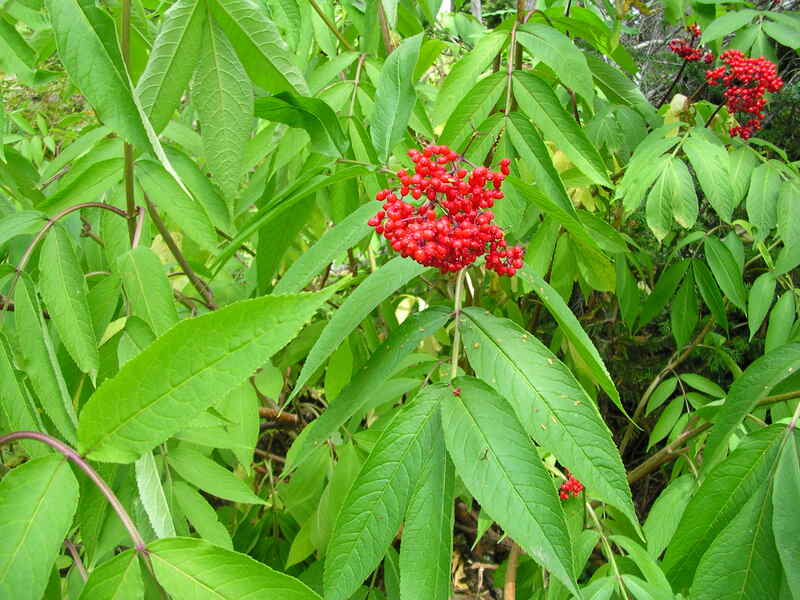
Photo Credit: brewbooks / Flickr / CC BY-SA 2.0
Pacific red elderberry blooms small, white flowers that cluster near the branch tips. It maintains its color in Tacoma’s cooler fall weather.
If you have a creek on your property, Pacific red elderberry will thrive if planted next to it. It’s natively found in moist woodlands and stream banks. A moist native plant garden is a good place for this deciduous shrub. Although Pacific red elderberry grows in partial shade, its growth is stifled if it doesn’t get enough sun. So a yard with trees that block the sun is not well-suited for this plant.
Butterflies are attracted to elderberry and birds can’t wait to eat the red berries from the shrub in the fall. But humans must not follow suit. The seeds and raw berries are toxic.
Plant type: Shrub
Hardiness zones: 3 to 9
Sun: Partial shade
Soil: Well-drained, loamy
Duration: Deciduous
Fragrance: Skunk smell
Bloom time: March – July
Water needs: Medium
Mature height: 3 to 10 feet in a garden (up to 18 feet in the wild)
Potential hazards: The seeds are poisonous. Berries are poisonous if eaten raw.
Maintenance: Medium
How to Choose Native Plants for Your Tacoma Yard
You want plants that will thrive in Tacoma’s mostly cloudy, high-precipitation climate. Plants should also be able to tolerate the cold winters. Choose plants that are in your area’s hardiness zones, which is 8b.
Select plants that your yard has the space to accommodate and that fit well with other vegetation. For example, native trees like douglas fir (Pseudotsuga menziesii) are very large. They may also be so big they block sunlight from getting to other plants. This can compromise the growth and lifespan of other vegetation.
Being familiar with your property’s characteristics is also important. You want to pick plants that thrive in your soil type and the amount of shade or sun your yard has. Also, consider your irrigation system. If you are the irrigation system, you may discover plants that require a lot of water are too time-consuming. Selecting plants with maintenance needs aligned with how much time you want to spend taking care of them will be best for the plants and you.
FAQ About Native Tacoma Plants
How do invasive plants affect the environment?
Invasive plants are introduced to an area by humans, or by animals that bring the seeds after eating them. Invasive plants compete with native plants for space and nourishment. These non-native plants alter the soil physically and chemically and change the ecology of a plant community, which can establish new populations that outcompete and eliminate food for local insects and wildlife.
What are some plants that are invasive to Tacoma?
Invasive plants can spread aggressively. Invasive plants that are also labeled as noxious weeds can even destroy native plants and cause erosion. Some Tacoma invasive plants are:
- Poison Hemlock (Conium maculatum)
- Eggleaf Spurge (Euphorbia oblongata)
- Yellow Nutsedge (Cyperus esculentus)
What’s the best time to plant native plants in Tacoma?
The best time to plant native plants in Tacoma is in the fall or early spring. In the fall, the weather is cooler, there’s usually more rain, and the soil is still warm from the summer. These conditions encourage root growth and help the root system to establish itself before winter.
In the spring, the weather and soil are warming up. Planting at this time allows plants to develop their roots before the summer heat and dryness.
What plants are native to Washington State?
Many plants are native to Washington, including:
- Red Flowering Currant
- Pacific Bleeding Heart
- Common Camas
- Red-osier Dogwood
- Tall Oregon Grape
- Vine Maple
- Salal
- Evergreen Huckleberry
- Serviceberry
- Indian Plum
Where to Find Native Plants in Tacoma
You could go to the Kruckeberg Botanic Garden to see a plethora of Pacific Northwest native plants. Or, you can take note of the plants that are around you whenever you’re outside or looking out of a window.
The Washington Native Plant Society (WNPS) is a valuable resource for information pertaining to native plants. WNPS has information on invasive plants, resources for identifying plants, and local venues hosting plant sales.
Native plants take less time, money, and resources than non-native plants because native plants are adapted to the environment. You can make your life even easier by considering other low-maintenance landscaping ideas.
Give yourself more time to enjoy fishing on the Puyallup River. Call a local lawn care professional to keep your yard lush, green, and healthy.
Main Photo Credit: Wild ginger / born1945 / Flickr / CC BY 2.0

